Beginning in 1941, Barnes Wallis designed a series of very large bombs, notably the Tallboy of 12,000 lbs and the Grand Slam of 22,000 lbs. These were to be dropped from a height of 20,000 feet and to be effective, must land within 150 yards of the target. The SABS Mk2A was selected as the most suitable sight to achieve this accuracy.
Left: The 12,000 lb Tallboy bomb. The Grand Slam was even bigger!
I URGENTLY REQUIRE FURTHER COMPONENTS FOR THIS SABS particularly the Stabilisation Unit
Below: The SABS Mk2A Bomb Sight
The sight was fitted to the Lancasters of 617 Squadron in August 1943 and used in there precision bombing raids thereafter. These raids included the blocking of the Saumur railway tunnel just prior to D-Day and sinking of "The Beast", the mighty Tirpitz. Although IX Squadron also participated in the Tirpitz raid and dropped the bomb which sank her, they were equipped with the normal Mk14 bomb sight. Only 617 Squadron used the SABS Mk2A.
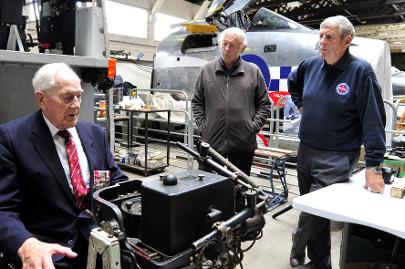
Wing Commander John Bell of 617 Sqn explaining the use of the SABS
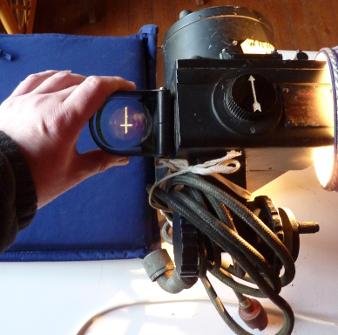
The sword shaped sighting image on the graticule
617 Squadron Veterans at Brooklands Museum in September 2016.
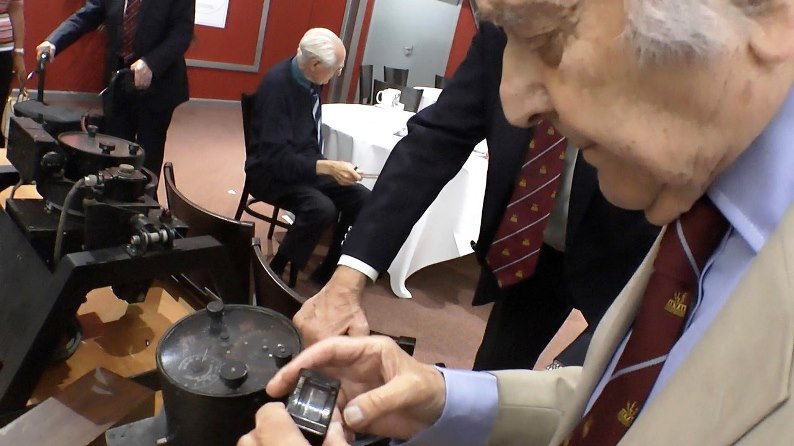
617 Squadron Lancaster pilot Lawrence "Benny" Goodman and Bomb Aimer John Bell examining my pilot's Bombing Direction Indicator and SABS Mk2A .
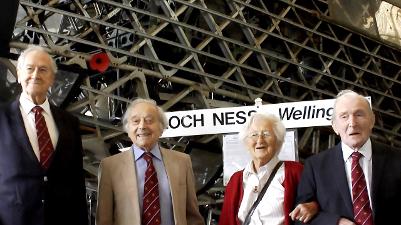
The 617 Squadron aircrew who attended the Brookland meeting together with Mary Stopes-Roe, daughter of Barnes Wallis.
From left to right they are John Bell (617 Sqn Bomb Aimer), "Benny" Goodman (617 Sqn Pilot), Mary Stopes-Roe and George "Johnny" Johnson (617 Sqn Bomb Aimer who took part in the famous 1943 Dams Raid)
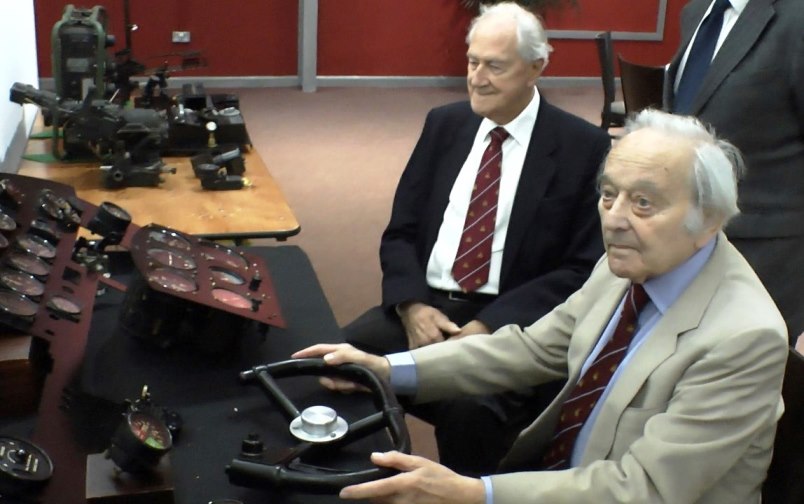
"Benny" at the controls of a Lancaster again watched by John Bell.
The instrument panels and control grip are from my Lancaster cockpitrebuild project.
Less than 1,000 SABS sights are believed to have been made, but others may have been converted from the Automatic Bomb Sight (ABS) Mk2. Towards the end of the war a number of SABS were gathered together in order to equip the Lancasters and Lincolns of the Tiger Force. This force was to have been used to bomb Japan, but the operation was cancelled when Japan capitulated following the American nuclear attacks. I noted with interest that the Lincoln in the RAF Museum at Cosford has a switch labelled SABS on the bomb aimer's panel, so presumably it was once equipped with SABS Mk2A. The sight certainly continued in use after the war, but the RAF generally used the Mk14/T-1 and its successors.
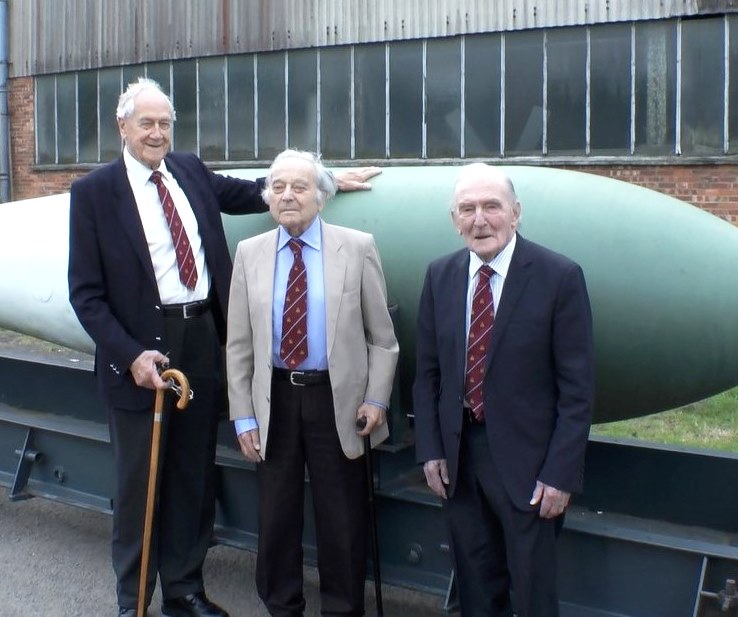
Well done Gentlemen! And thank you for a wonderful day.
My thanks are also due to Andrew Panton for arranging the day's events and to Mary Stopes-Roe and Norman Parker for there valuable input.